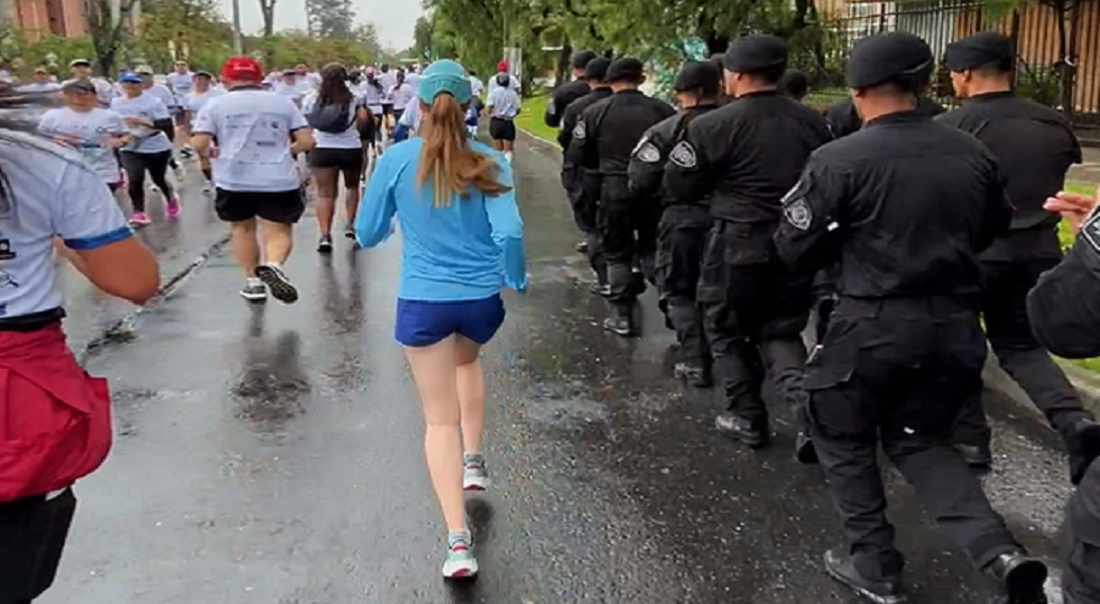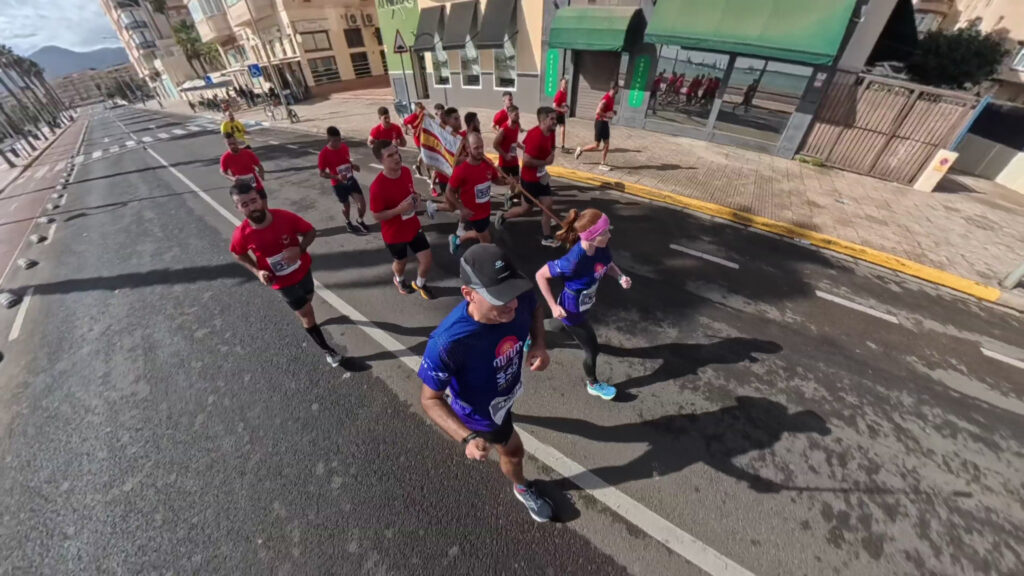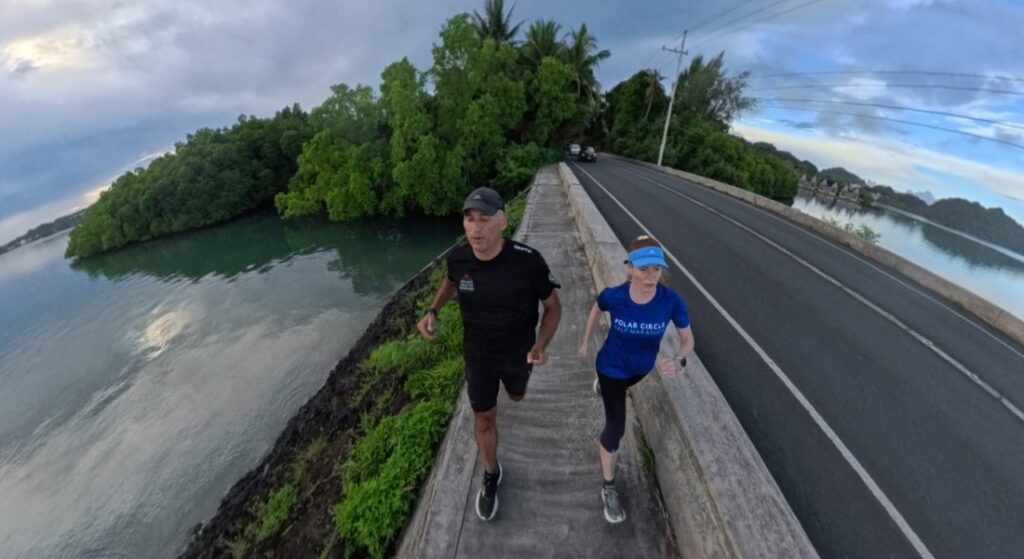Bogotá, Colombia. 5th of May 2024.
Under the rain we ran alongside Colombian military corps, hearing them shouting hymns while splashing water with their powerful treading. We were in a race for the Colombian military heroes!
TLDR; “Too long, didn’t read”
- I just want to run! Take me to RACE.
- I have 1 minute. Take me to USEFUL INFORMATION.
- Running is my excuse for travelling. Take me to TRIP.
- I want to know what to read in the plane. Take me to ONE BOOK.
🌍 The trip 📷: what to see around Bogotá in one day
Since I have described what to see in Bogotá in this entry, here I will describe what to see around Bogotá… and: spoiler… It is amazing!
Two of the most famous places in Colombia can be visited in a day. And that’s what we did: We visited the “Laguna del Caquite Guatavita” and the “Catedral de Sal de Zipaquitá”.
Laguna del Caquite Guatavita
We left Bogotá by the road to La Calera, that goes up “Alto de los Patios” and which, on a Saturday morning, was full of cyclists.
Really: it looked like a race. Still, they were amateurs who went up 7kms at high altitude.
Cyclism is very important in Colombia, and we saw a mural later dedicated to Egan Arley Bernal, the youngest winner of the Tour of France, in Zipaquirá, where he was born:
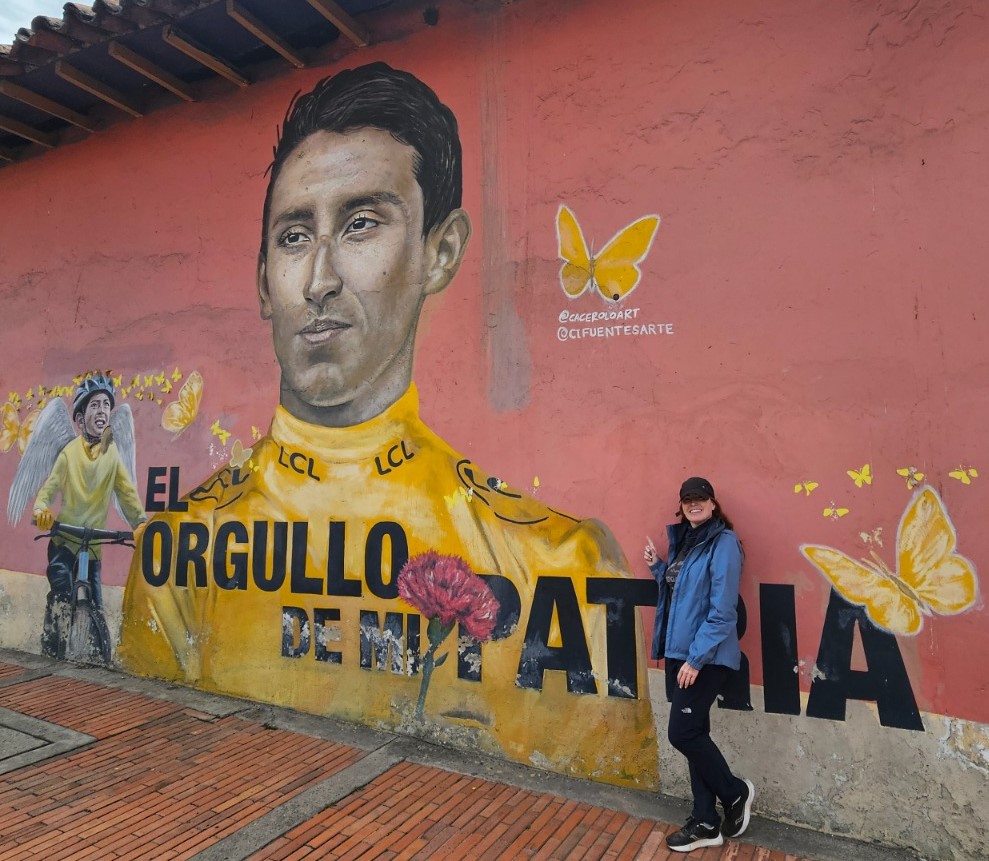
After one hour we embarked on a fantastic 2 hours tour of the sacred Guatavita Lake, the site of the legend of El Dorado. Yes, that legend which attracted the “conquistadores” in the sixteenth century and took them to pursue very brutal and extreme actions.
Our indigenous guide Clara gave us a very complete tour, much centered in the ancestral customs and the conexion to the land. She even advised us to hug a tree 🌲…
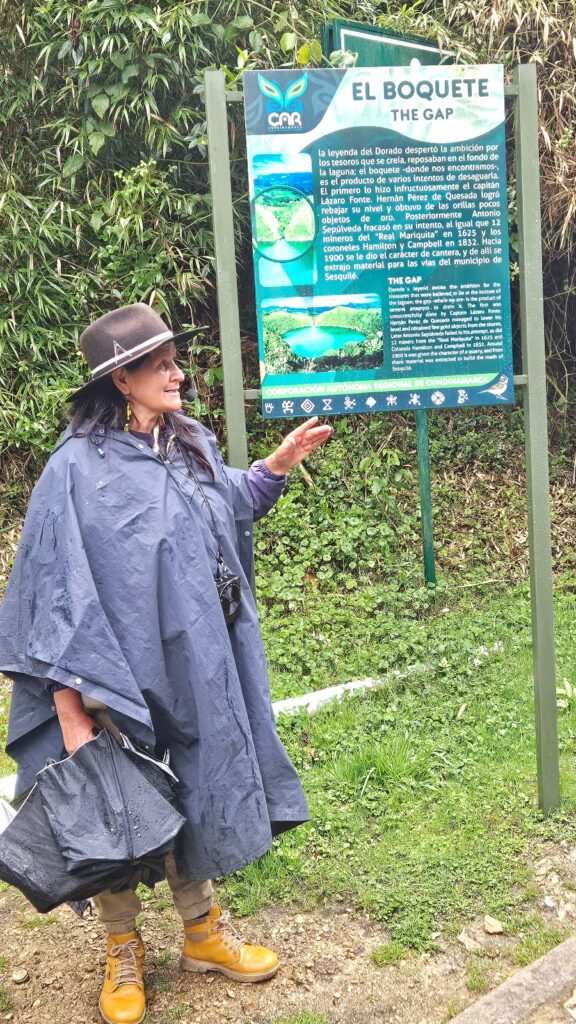
Guatavita was a sacred site for the indigenous Muisca people, who performed rituals and ceremonies at the lake. The most famous of these rituals involved the El Dorado legend, the mythical city of gold, where a chief would cover himself in gold dust and offerings before diving into the lake.
Gold or not, the lake is extremely beautiful:

We really enjoyed our trekking amidst the stunning setting, nestled amidst lush greenery and rolling hills. It was raining quite a bit but, luckily, we were good equipped!
Catedral de Sal de Zipatquitá
Later we visited what it is considered (and was voted at some point) the “First Wonder of Colombia”: the underground cathedral of Zipatquitá.

The cathedral is carved out of a salt mine, making it a one-of-a-kind architectural marvel. The combination of natural elements and human craftsmanship creates a surreal and awe-inspiring environment.

The cathedral holds immense cultural and religious significance for Colombians and visitors alike. It’s not just a tourist attraction but also a place of worship and pilgrimage for many Catholics.

I really enjoyed visiting the cathedral’s chambers and tunnels, and I was very surprised to see the intricate salt sculptures illuminated by soft lighting. Of vibrant colours, of course!
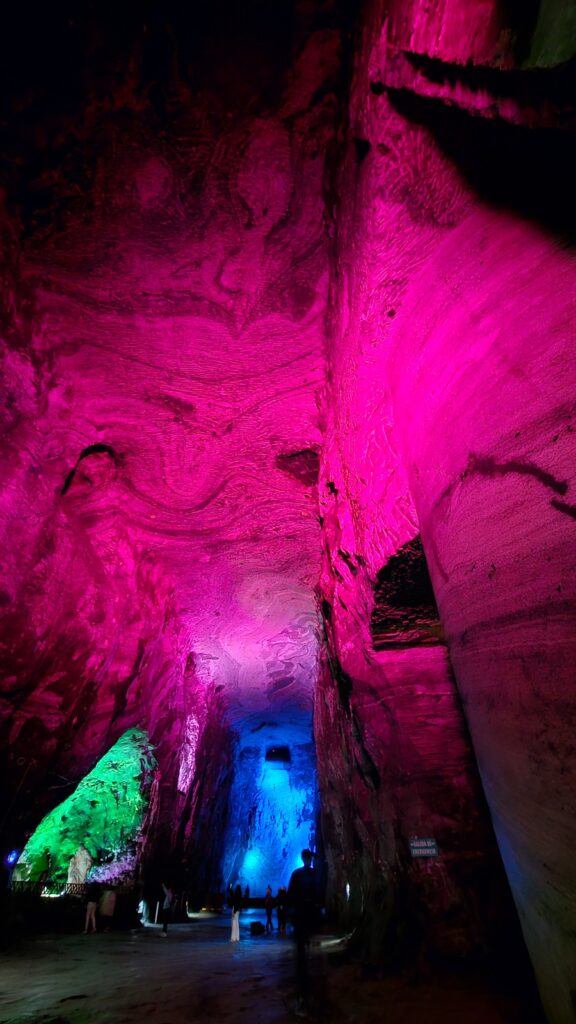
The underground setting adds a sense of mystery and adventure to the experience: the main altar is 180 meters underground!
🏃♀️ The race 🏃♂️
Trying to sign up…
The “Carrera por los héroes” is a 10k/5k charity race in Bogotá. The proceedings of the race are invested in basic, middle and higher education programs, rehabilitation through sports for men and women of the forces with acquired disabilities; and spouses and children of those killed in action.
It was impossible to sign in if you were not living in the city. And believe me: I tried.
After trying with my hotel address and my Spanish adress, I contacted the “Corporación Matamoros por los héroes“, which is the military organisation organising the race.
They told me to sign in in person while in Bogota. I asked whether the entries were not going to be sold out by the time we got there … but never got a response.
And, alas! when we arrived on the Wednesday prior to the race, the tickets were indeed sold out.
The day of the race
Still, we decided to show up to see the race and enjoy the atmosphere.
On the Web it said that the race started at 8am, so we ran the 2 kilometers that separated our hotel from the Start line around 7:30 in the morning.
We first saw some runners wearing the white race t-shirt with the inscription “200 years of glory”, who were also heading to the Start. Some street vendors were selling cell phone arm holders, Nike’s knockoffs, clearly.
At the Start/Finish line, group of soldiers from the army, very young and very serious, held flags looking a tad bored. And a group of men and women from the Armed Forces waited equally bored.
It was drizzling and we took some photos while we waited.
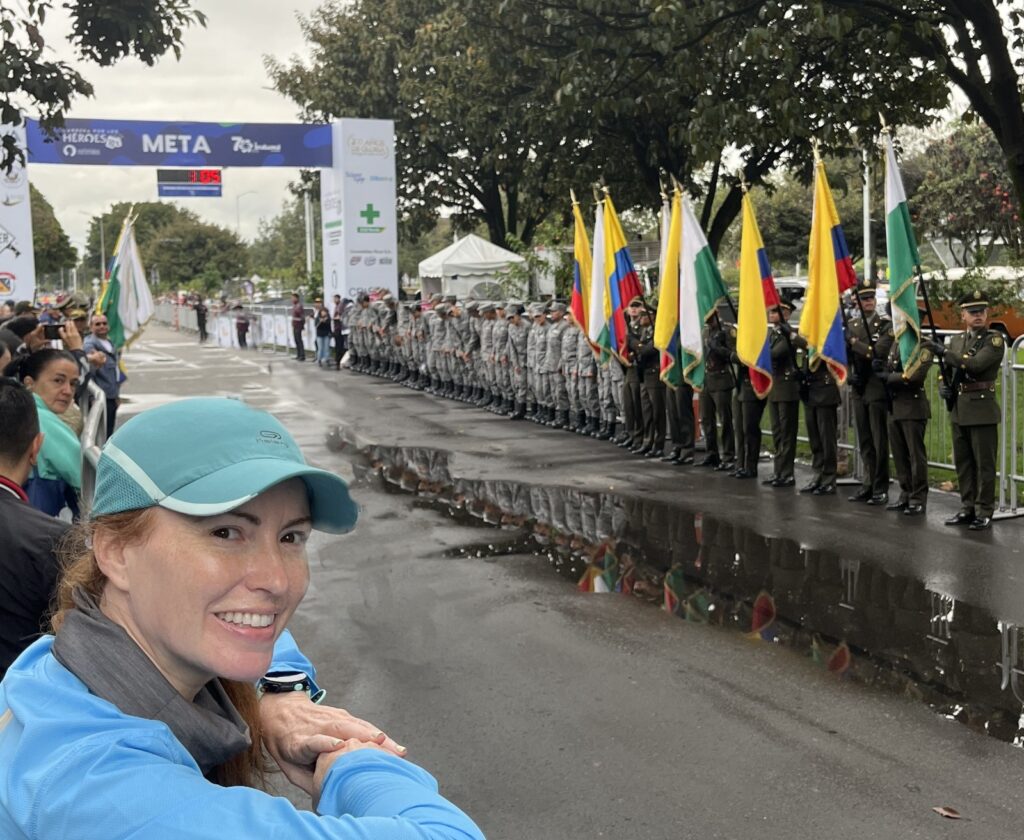
Wheelchair race begins and ends
At 8am the wheelchair runners started, although later, during in the race, we also saw some with the rest of the people.
There were three wheelchair runners. And in a quarter of an hour they were back.
The organizers had to call the soldiers (who were sitting nearby) back, with shouts of “they’re coming, hurry up!!”
Daft Punk was playing and more people were arriving by the minute. It was very good to see how, lining at the entrance every few meters, three soldiers from the three armies received the three wheelchair runners, with the young men from the Army carrying the flags.
Waiting for the race to start: the battalions march on!
Minutes passed and still the general race was not starting. We became tired and were glad that we were not going to run because, also, it was starting to rain harder…
Street vendors passed by shouting “Carpas, carpas!” (which are plastic raincoats) or selling empanadas shouting “Empanadas. A la orden! Tinto”… (whatever that means)
But slowly the atmosphere got more animated and Roger took a photo with “Chato”, a pug who was dressed as an army man, including a cap! It even had his name inscribed on the back.
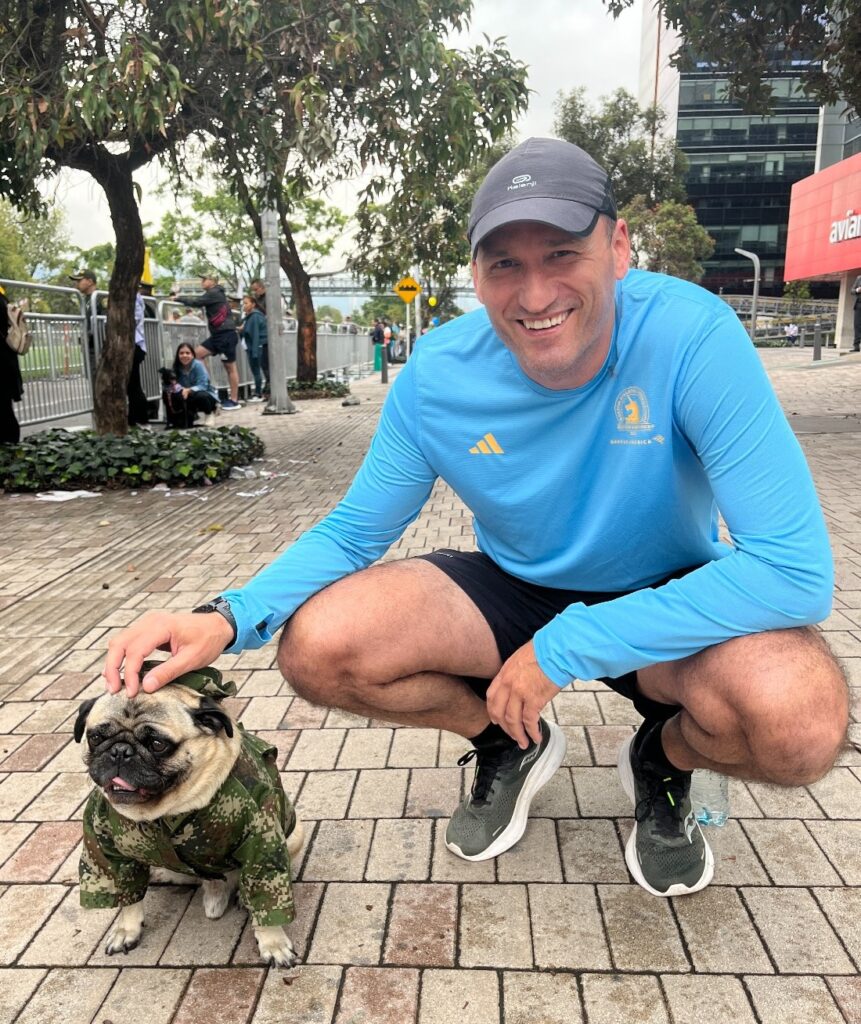
At 8:45, four battalions started marching on!!
First, those who looked like they were from the special forces of the Army, with their faces painted (they were quite scary), singing hymns that they must use when training.
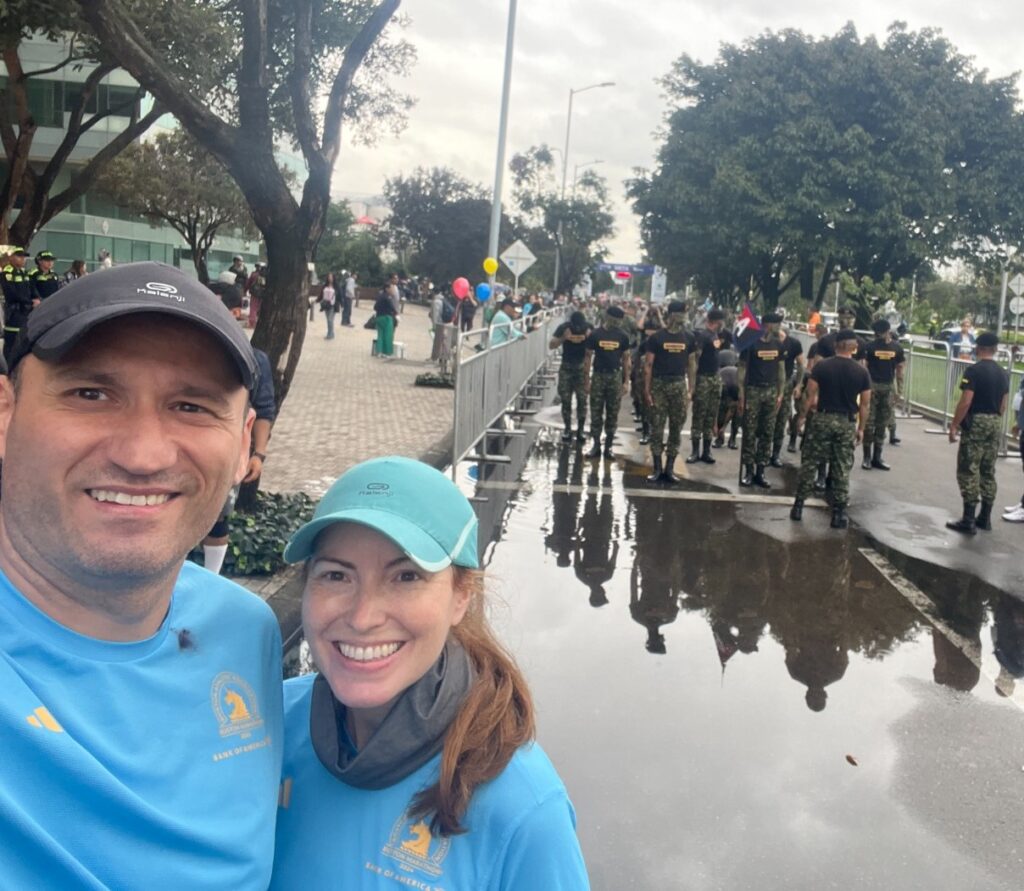
Then, those of the Air Force, in which there were a couple of women.
Then those from the Navy, who, like the previous two, were singing their hymns and trotting super diligently.
And finally the Police. We didn’t know they were running but we realised for what they were chanting.
It was all very cool to see!
Race starts… and so do we!
At 9am the race was kicked off and thousands of runners started running in front of us!
It surprised us because it seemed very amateur: there were no runners focused on doing a PB and being nasty. There was just a bunch of people of all kinds running calmly. And, what was very nice to see, there were many people in wheelchairs or with prosthetic legs.
I noticed a girl who had both prosthetic legs. What a champion!
It wasn’t raining as much anymore and we saw how many people joined the race without a bib so…
We couldn’t resist and… here we go! We decided to race!

The route
Again, we noticed the altitude so we ran very, very calmly.
When at kilometer 1 we saw that there was a split between the 5k and 10k races, we opted for the 5k.
The route is flat and there is only one bridge between kilometer 1 and 2. There were quite a few water puddles but it was not slippery.

On the 5k route there were two refreshment stations with drink cups and another with plastic bags of water.
There were also army tanks !!!
Apart from that, there wer quite a lot of people in the street cheering.

But the best thing was that we overtook the 4 platoons of soldiers and police forces, who never stopped singing. Water splashed under their footsteps while they marched on. What an interesting experience!
The Finish
The last part was pure fun: We picked up some speed but still we were being cautious, and even shouting “Pista!” which means “Give way” in Colombian: something we learnt in the beginning of the race hearing other runners.
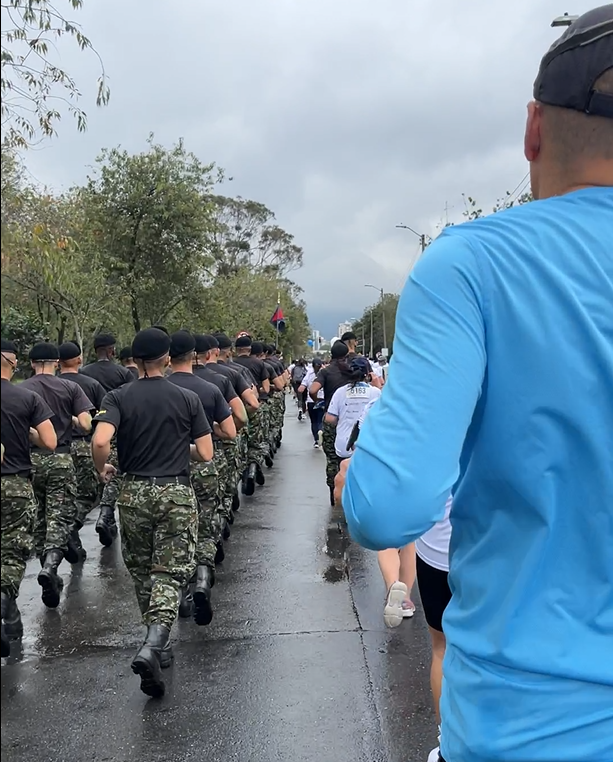
We entered the finish line holding hands, amidst a lot of excitement and a few drops of rain.
Afterwards, we asked, almost begged, if they could give us a medal…. A friendly security guard spoke with a supervisor who, very kindly, told us that we should have signed up in the Matamoros corporation office. We explained our situation to her, mentioning how hard we had tried to sign up… and she gave us two medals!
Viva Colombia! Gracias!
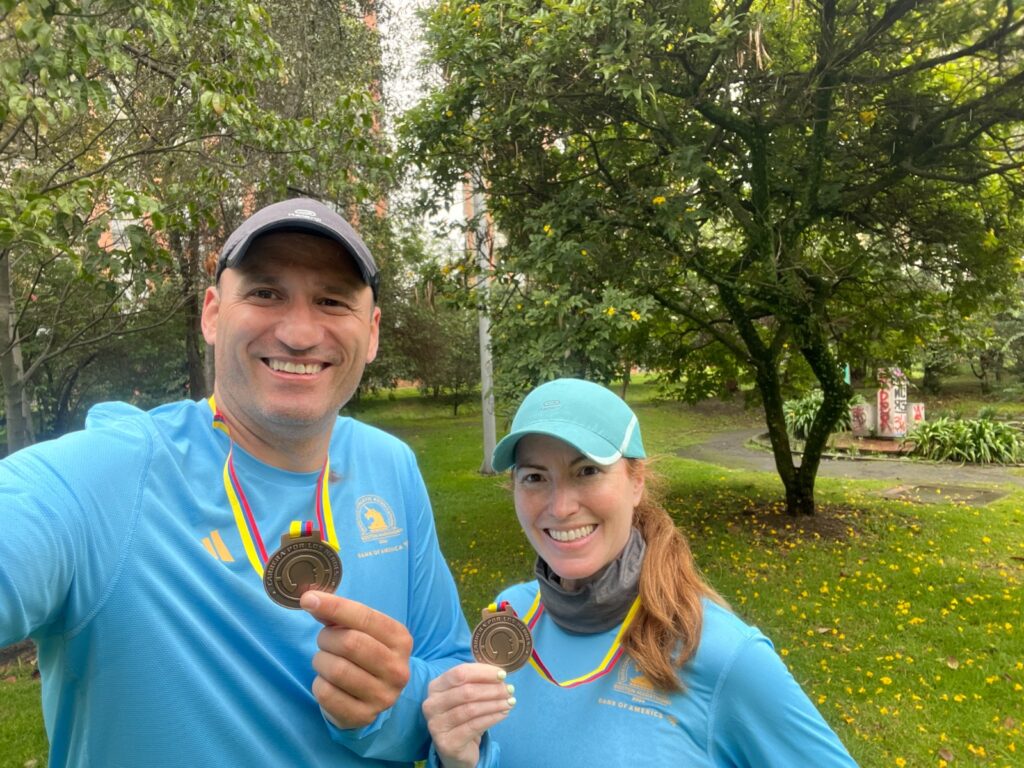
We were ecstatic, because the medal ribbon also had the colors of the Colombian flag!
So we returned to the hotel super happy for having been a part of “The Race for the Heroes” in Bogotá.

Useful information
🏆 Carrera por los Héroes (Race for the Heroes). Bogotá, Colombia.
🌐 Website: https://www.carreraporlosheroes.org/
🏃 Number of runners: 10,000.
🗓️ First weekend in May in Bogotá, Colombia – South America.
👟 Urban: bring shoes for asphalt.
✅ Two easy courses and two ways of running: onsite and virtual.
✅ The possiblity to run alongside Colombia’s army, air force and navy corps and the police force!
❌ Very difficult to sign in if you do not have an address in Colombia.

Map


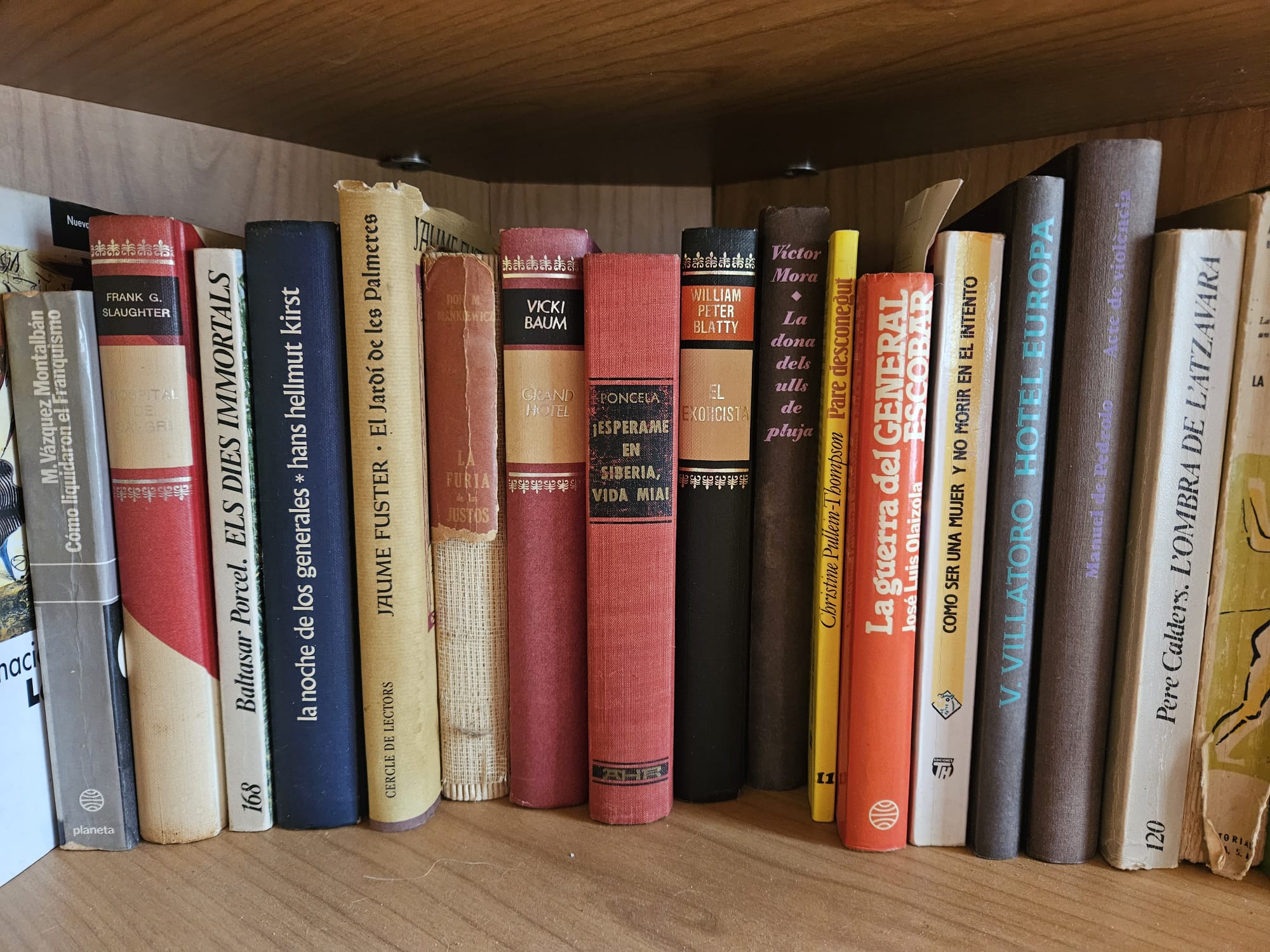
One book
Since I am a big Gabriel García Márquez fan, for my Colombian posts I have chosen my favourite books by him, one for each blog post.
“Chronicle of a death foretold“, by Gabriel Garcia Marquez”
The novel impressed me because of how fate and determination interwine; everybody knows, including the reader, that Santiago Nassar is going to be murdered.
Yet nobody is acting to prevent it. Like if all this was his fate… like life and death were part of something bigger and even predictable…
And, like the famous beginning of Gabriel García Márquez most famous book, “One hundred years of solitude”, which I have included in Bogotá’s entry, this book also starts with a memorable quote, famous all over:
On the day they were going to kill him, Santiago Nasar got up at five-thirty in the morning to wait for the boat the bishop was coming on
The famous beginning of “Chronicle of a death foretold”, Gabriel Garcia Marquez

Plot summary: A man returns to the town where a baffling murder took place 27 years earlier, determined to get to the bottom of the story. Just hours after marrying the beautiful Angela Vicario, everyone agrees, Bayardo San Roman returned his bride in disgrace to her parents. Her distraught family forced her to name her first lover; and her twin brothers announced their intention to murder Santiago Nasar for dishonoring their sister.
Yet if everyone knew the murder was going to happen, why did no one intervene to stop it? The more that is learned, the less is understood, as the story races to its inexplicable conclusion.

